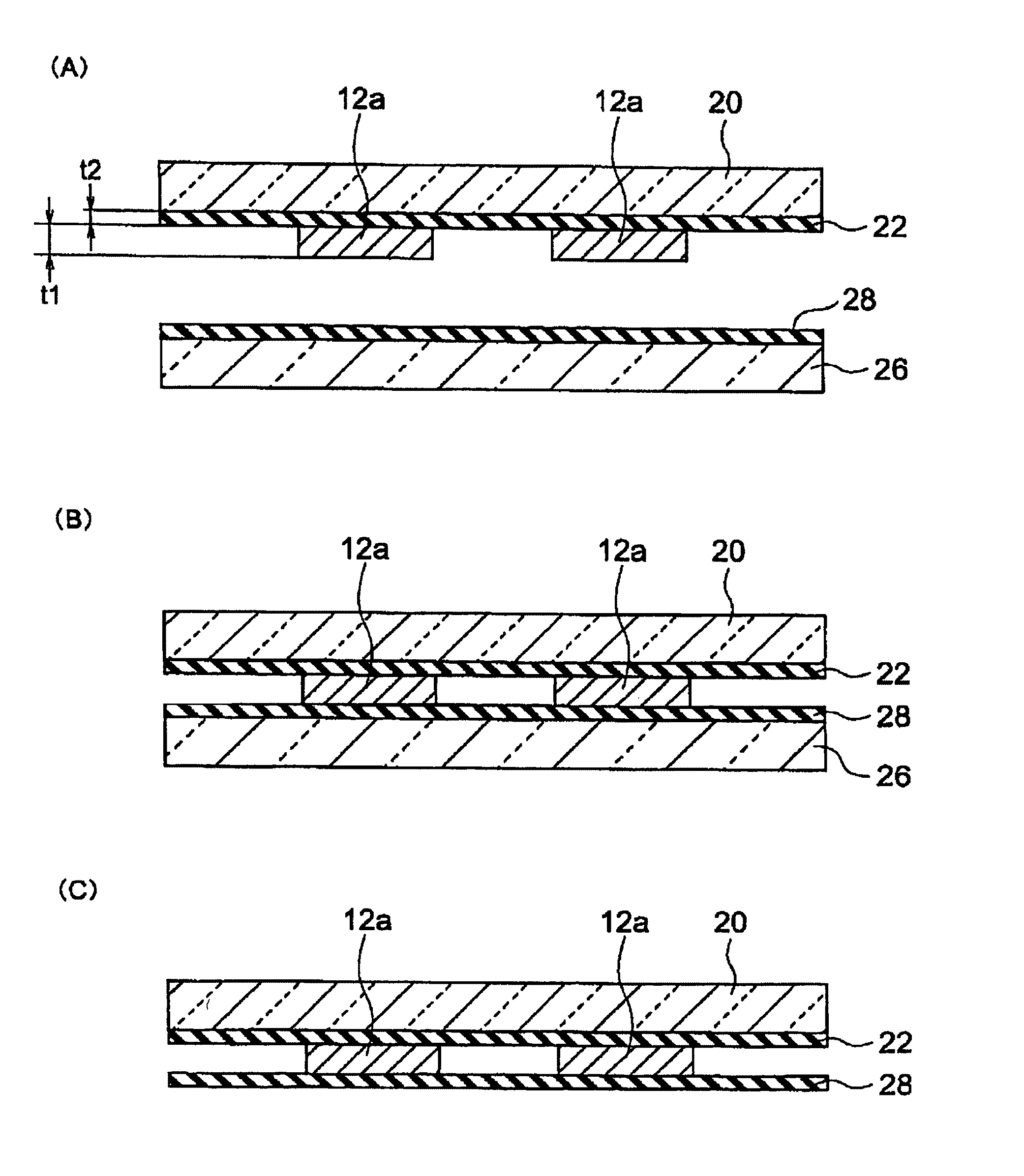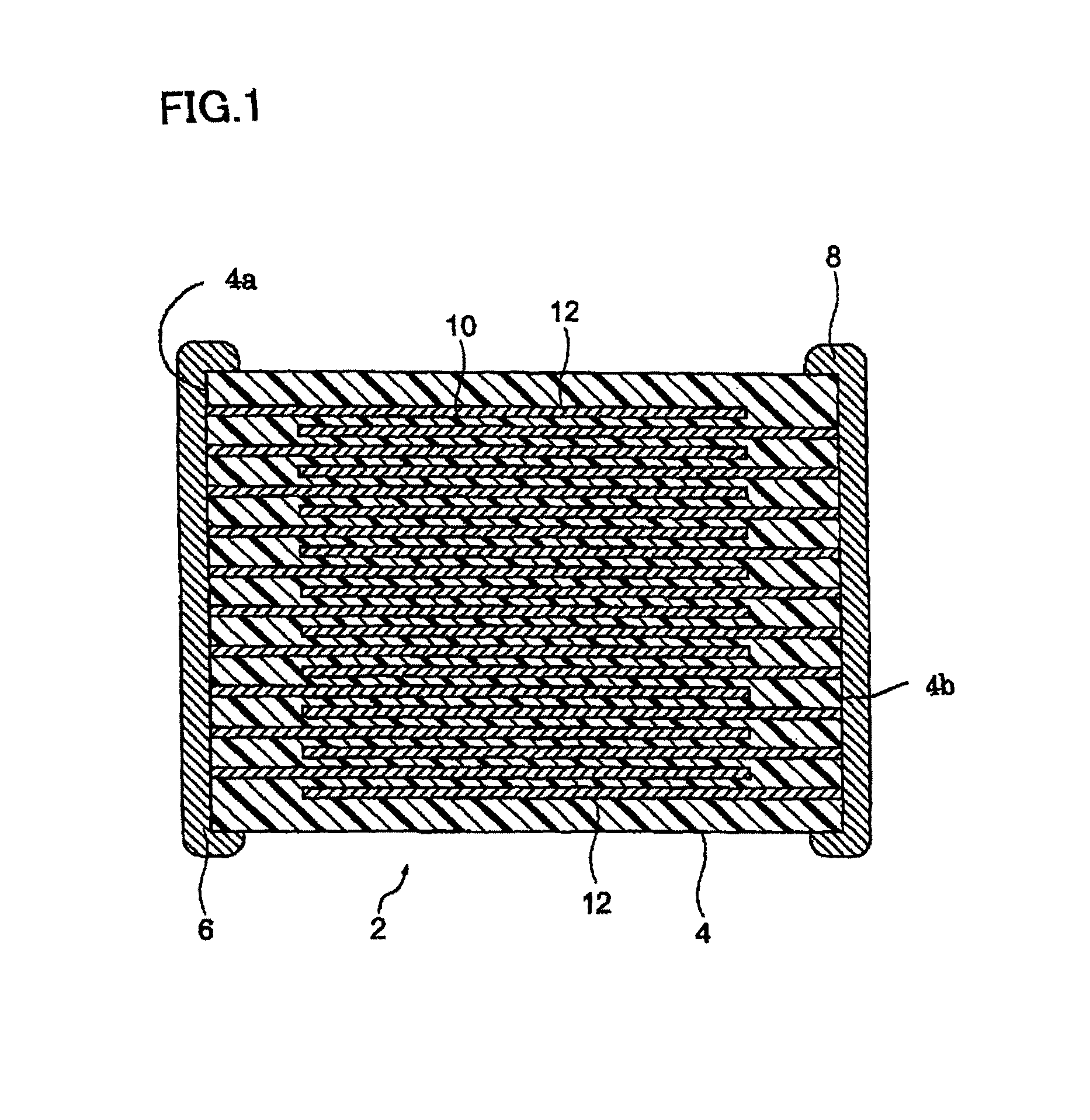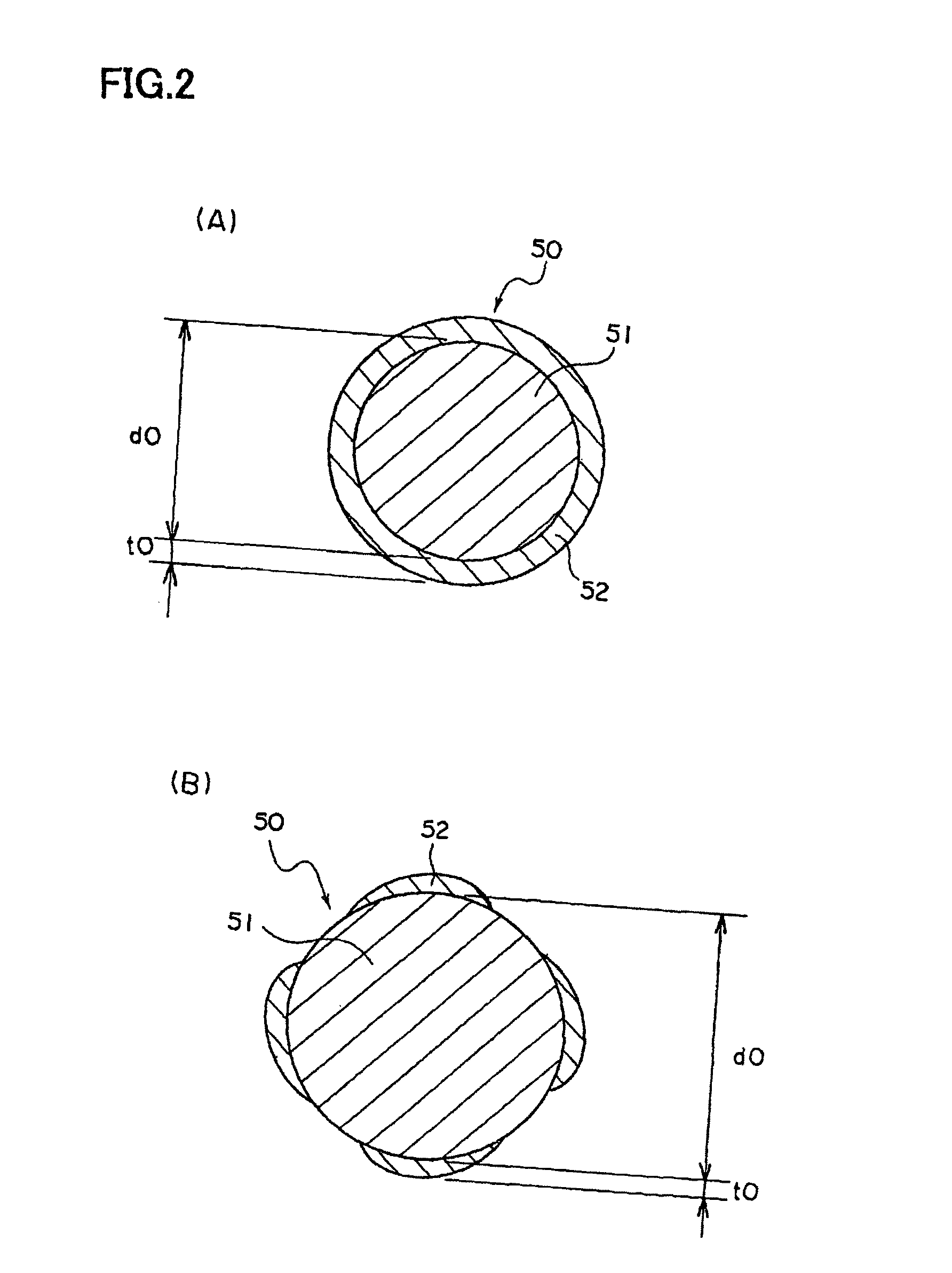Method of production of a conductive particle, conductive paste, and method of production of electronic device
a technology of conductive particles and conductive paste, which is applied in the direction of variable capacitors, capacitors, fixed capacitors, etc., can solve the problems of internal electrode layers cracking or peeling, high cost of multi-layer ceramic capacitors, and high cost of precious metals, so as to prevent spheroidization, reduce the reduction of electrostatic capacity, and improve the wettability and bondability.
- Summary
- Abstract
- Description
- Claims
- Application Information
AI Technical Summary
Benefits of technology
Problems solved by technology
Method used
Image
Examples
example 1
[0129]This example was performed in a glove box with an N2 flow with an oxygen content of 0.005 vol %.
[0130]1 g of Pt chloride hydrate was dissolved in 1 liter of water, then 1 g of PVA (one example of a water-soluble polymer compound) with a saponification degree of 88 mol % (0.1 wt % with respect to Pt chloride aqueous solution) was added and the mixture vigorously stirred to prepare a Pt chloride aqueous solution. Next, 13 g of an Ni powder having an average particle size of 100 nm was charged into the Pt chloride aqueous solution and the result stirred to prepare an aqueous dispersion.
[0131]Further, separate from this aqueous dispersion, 0.47 g of hydrazine hydrate 80% was added to 470 ml of water and the two mixed uniformly to prepare a hydrazine aqueous solution.
[0132]Next, the previously prepared Pt chloride aqueous solution containing Ni powder was vigorously stirred at room temperature while slowly adding a hydrazine aqueous solution at a rate of about 10 ml / min. By adding ...
example 2
[0134]Except for replacing the PVA with another example of a water-soluble polymer compound, that is, a copolymer of methyl acrylate and acrylic acid (acid value 10 mgKOH / g, molecular weight of 100,000), the same procedure was followed as in Example 1 to produce conductive particles. This was observed in the same way as in Example 1.
[0135]The heat treated powder obtained in this example was examined under a scanning electron microscope, whereupon it was found there was no Pt segregation. Further, when observed under a TEM, it was confirmed that tens of Pt particles of 10 nm or less were deposited on the surfaces of the Ni particles.
example 3
[0136]Except for replacing the PVA with the use of an acetylene diol-based non-ionic surfactant (HLB value 10), the same procedure was followed as in Example 1 to produce conductive particles which were examined in the same way as in Example 1.
[0137]The heat treated powder obtained in this example was examined under a scanning electron microscope, whereupon it was found there was no Pt segregation. Further, when observed under a TEM, it was confirmed that tens of Pt particles of 10 nm or less were deposited on the surfaces of the Ni particles.
PUM
| Property | Measurement | Unit |
|---|---|---|
| pressure | aaaaa | aaaaa |
| temperature | aaaaa | aaaaa |
| acid value | aaaaa | aaaaa |
Abstract
Description
Claims
Application Information
 Login to View More
Login to View More - R&D
- Intellectual Property
- Life Sciences
- Materials
- Tech Scout
- Unparalleled Data Quality
- Higher Quality Content
- 60% Fewer Hallucinations
Browse by: Latest US Patents, China's latest patents, Technical Efficacy Thesaurus, Application Domain, Technology Topic, Popular Technical Reports.
© 2025 PatSnap. All rights reserved.Legal|Privacy policy|Modern Slavery Act Transparency Statement|Sitemap|About US| Contact US: help@patsnap.com



